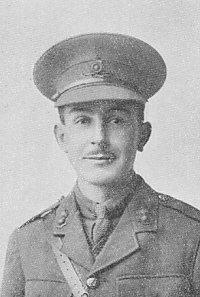
CLARENCE HAROLD CHURCHILL
The Churchill family were late arrivals to the history of Portsmouth having been resident, for much of the time covered by available records, in Devon, largely in the Newton Abbot area. The reason for the move to Portsmouth in the early years of the 20C are unclear but as Clarence Harold's father, William Robert Churchill, was a commercial traveller he must have spotted a business potential whilst visiting the Borough.
William Robert was born at Teignmouth, Devon in 1856 and married Edith Scoins at Camberwell, London in 1877. As she was born in Exeter in 1854 it seems likely that William met her in Devon rather than in London. Over the next quarter of a century the couple had six children, the youngest of whom was Clarence Harold who was born in 1898. At the next census following his birth the family are traced to a Temperance Hotel in Newton Abbott which was being run by Edith whilst William Robert was away selling confectionery.
Between the 1901 and 1911 censuses the family moved to Portsmouth and settled in at a good sized house at 17 Festing Road. By this time all the children except Clarence had left the household. In 1911 Clarence began attendance at the Secondary School on Victoria Road North, Southsea where he maintained his studies until 1914. Apparently he was best remembered 'by all associated with the school during the years immediately preceding the outbreak of war for his most successful appearances in dramatic sketches at two of the annual School Concerts. On the first occasion he was prominent in a farce, and on the second he played the part of young Honeywood in a short play extracted from Oliver Goldsmith's "Good-natured Man."'

After leaving school he secured a place in Honours at the Oxford Senior Local Examination, and proceeded to the Municipal College, where for a year or two he was as prominent in its social life as he had been in that of the Secondary School. He next gained an entry to the Royal Military Academy at Woolwich, and after a training which was slightly prolonged owing to an unfortunate accident met with during riding exercises he was commissioned in September, 1917, as a 2nd Lieutenant in the Royal Garrison Artillery.
Two months later he was in France, and on December 15th, when he was but 19 years of age, his life ended. At 2.30 in the afternoon of that day he was on his way from the Battery Office to an observation post when a shell burst not many yards from him. On reaching the spot his comrades found life to be already extinct, and they concluded that death must have been instantaneous. On the following day his body was laid to rest in the cemetery at "White House St Jean," near Ypres. Although Lieut. Churchill had been less than a month with them his brother officers say that he had already made himself one of them, and they deeply regretted that he had "so early met his death in the path of honour and duty."
FURTHER INFORMATION
The photograph above was taken from a WW1 memorial booklet published by Southern Grammar School. Extracts also appear above.
The Commonwealth War Graves Commission (CWGC) lists Second Lieutenant Clarence Harold Churchill, Royal Garrison Artillery, died on 15/12/1917. Buried at White House Cemetery, St. Jean-les-Ypres (Grave Ref: II.D.19). Son of William Robert and Edith Churchill, of 17, Festing Rd., Southsea, Portsmouth.
Clarence Churchill is remembered on the Southern Grammar School WW1 Memorial, St. Simon's Church WW1 Memorial and on the Cenotaph (as Churchill C.). He is not listed in the 'National Roll of the Great War'.
Tim Backhouse
June 2014